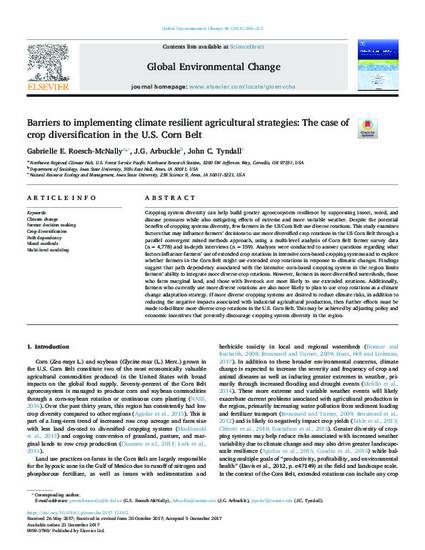
Cropping system diversity can help build greater agroecosystem resilience by suppressing insect, weed, and disease pressures while also mitigating effects of extreme and more variable weather. Despite the potential benefits of cropping systems diversity, few farmers in the US Corn Belt use diverse rotations. This study examines factors that may influence farmers’ decisions to use more diversified crop rotations in the US Corn Belt through a parallel convergent mixed methods approach, using a multi-level analysis of Corn Belt farmer survey data (n = 4,778) and in-depth interviews (n = 159). Analyses were conducted to answer questions regarding what factors influence farmers’ use of extended crop rotations in intensive corn-based cropping systems and to explore whether farmers in the Corn Belt might use extended crop rotations in response to climatic changes. Findings suggest that path dependency associated with the intensive corn-based cropping system in the region limits farmers’ ability to integrate more diverse crop rotations. However, farmers in more diversified watersheds, those who farm marginal land, and those with livestock are more likely to use extended rotations. Additionally, farmers who currently use more diverse rotations are also more likely to plan to use crop rotations as a climate change adaptation strategy. If more diverse cropping systems are desired to reduce climate risks, in addition to reducing the negative impacts associated with industrial agricultural production, then further efforts must be made to facilitate more diverse crop rotations in the U.S. Corn Belt. This may be achieved by adjusting policy and economic incentives that presently discourage cropping system diversity in the region.
Available at: http://works.bepress.com/john_tyndall/54/

This article is published as Roesch-McNally, Gabrielle E., J. G. Arbuckle, and John C. Tyndall. "Barriers to implementing climate resilient agricultural strategies: The case of crop diversification in the US Corn Belt." Global environmental change 48 (2018): 206-215. doi: 10.1016/j.gloenvcha.2017.12.002.